Popping the bottle
The true costs behind plastic production
Around 117,000 plastic bottles will have been used by the time you finish reading this sentence.
At first glance it may appear as nothing more than a statistic. Yet, beyond the number lies a stark truth: this has a profound direct impact on your health, along with the environmental, climate and social costs at every stage of its life cycle.
Let's delve deeper into why this seemingly innocuous stat carries such weight.
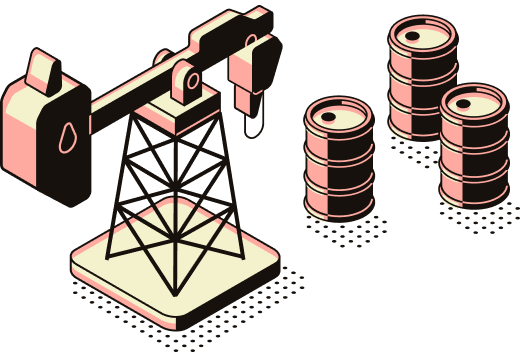
Stage 1
The answer lies underground
The journey starts deep beneath the earth's surface: over 99 percent of plastic originates from fossil fuels.
Crude oil and natural gas are extracted through methods such as mining, drilling or hydraulic fracturing.

Approximately 4 to 8 percent of global oil production is used to make plastics, a figure expected to rise to 20 percent by 2050.
These growth trends are at odds with the Paris Agreement's goal of limiting global warming to 1.5°C.
Environmental justice is particularly important in this scenario too, because fossil fuel plants tend to be situated in low-income communities, unfairly burdening residents who often lack the means to protect their well-being.
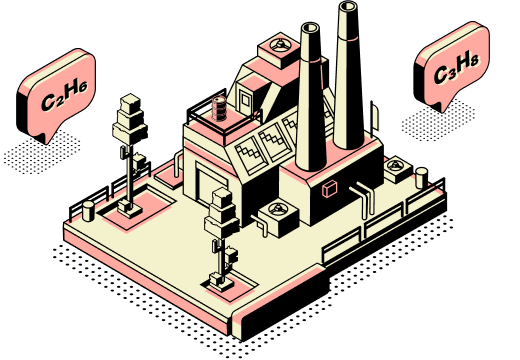
Stage 2
A double-edge nature
The next step is for the raw materials to undergo a series of intricate and energy-intensive chemical reactions and processes, ultimately resulting in the formation of plastic resin. The result: small plastic pellets to construct a bottle.
For the majority of plastic bottles worldwide, the resin used is polyethylene terephthalate, often referred to as 'PET'. Bottles made with this material are readily recyclable, but the challenge lies in maintaining its quality throughout the recycling process, which can lead to degradation and eventual waste generation. Bottle caps, often crafted from polyolefins, similarly showcase excellent recycling properties. However, their recyclability is often low because of the additives, such as colourants. Nonetheless, opting not to recycle PET bottles can result in an astonishing degradation period of about 450 years in the environment – but we'll delve into it later.
As the properties of the raw material are refined to create a usable product, it paradoxically exposes both human health and the planet to coarsening conditions, underscoring the inherent double-edged nature of producing small plastic pellets.
For instance, this stage of the process, conducted in facilities often owned by subsidiaries of international oil and gas companies, demands a substantial amount of energy.
It’s also highly polluting: about 90 percent of greenhouse gas emissions associated with plastics come from extracting and processing raw materials, which releases harmful air emissions and can result in health risks including reproductive and developmental disorders or cancer.
And recently, a team of scientists discovered over 16,000 chemical substances associated with plastics – at least a quarter of which are believed to be hazardous to human well-being and ecological integrity.
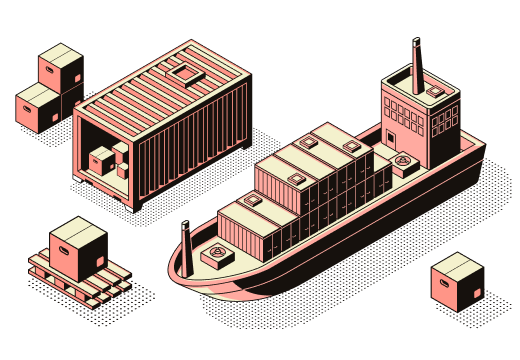
Stage 3
A frightening freight
The small plastic pellets are sent to companies handling product manufacturing.
The shipping methods aren’t eco-friendly, often relying on cargo ships, which combined with the frequent need to cover long distances, increases environmental strain through higher carbon emissions.
This part of the process is also sensitive because micro- and nanoplastics come into play.
Absence of evidence is not evidence of absence
Microplastics are tiny particles measuring from 5 millimetres to 1 micrometre; nanoplastics are particles less than 1 micrometre in size. They’re created when larger plastics break down or from the release of minuscule plastics. This may occur at earlier stages too, but it primarily happens during transportation, where spills, mishandling or leaks are highly possible.
Where do these particles end up?
Simply everywhere. They find their way into air, water, soil and beyond. The ocean bears the brunt. And once these tiny particles are in the environment, they don't break down naturally and cannot be removed. Scientists have found particles of plastic in the stomachs of fish, in the placentas of pregnant women and even near the summit of Mount Everest and Antarctica. Others have estimated that, on average, a person might eat 5 grams of microplastics in a week – about the weight of a credit card.
An unopened bottle
Despite their widespread distribution and potential risks, there’s still a lack of comprehensive studies to fully understand the long-term consequences of these tiny particles' exposure on human health and the environment, taking into account that they also carry chemicals and additives that were added at other stages of their life cycle. This gap in knowledge underscores the urgent need for further research and regulatory action to mitigate the potential harm.
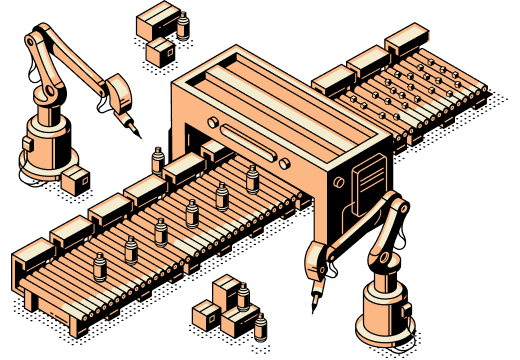
Stage 4
Crafting in seconds a 450-year lifespan product
At this juncture, the small plastic pellets undergo a metamorphosis and emerge as the conventional plastic PET bottles.
The bottles are usually formed by blowing or injecting the small plastic pellets into a mold, shaping them with high heat and pressure. The production of a PET bottle commonly takes from a fraction of a second to just a few seconds.
Worldwide, companies have the capacity to produce 20,000 PET bottles every second. That means, since you began reading this story, roughly three million bottles have already been produced and consumed. Yet, without intervention, they'll stick around for approximately 450 years.
A crucial aspect of the manufacturing process is also the ongoing subsidization of fossil fuels by many countries. This results in lower production costs for various plastic products, including PET bottles, which in turn meets the demand in a self-perpetuating cycle and consequently it fosters a future dependency on fossil fuels.
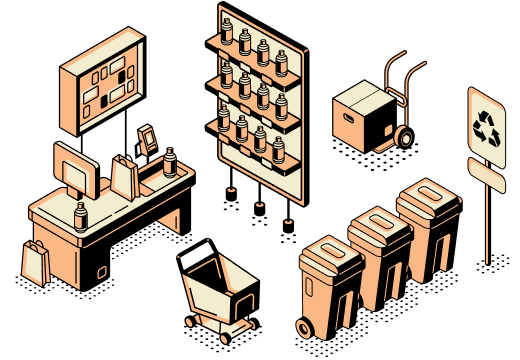
Stage 5
Distributing, consuming, discarding
The PET bottle is ready to be filled, sealed and distributed to you. It's in your grasp. You take a sip. If you finish a litre of bottled water, you're likely swallowing around 240,000 plastic fragments.
After use, a PET bottle can end up thrown away, openly burned or managed through waste disposal.
If plastic is thrown away, it pollutes landscapes, waterways and ecosystems, affecting aquatic and terrestrial animals that often mistake it for food, introducing plastics into the food chain. When incinerated, it releases harmful pollutants, including methane, which can have a more significant impact on climate change than CO₂ over shorter periods. And even when handled in the most sustainable way possible, only about 9 percent of all plastic waste is estimated to be recycled. Specifically, just 13 percent of bottles, which are the most commonly recycled single-use plastic, are made from recycled PET material.
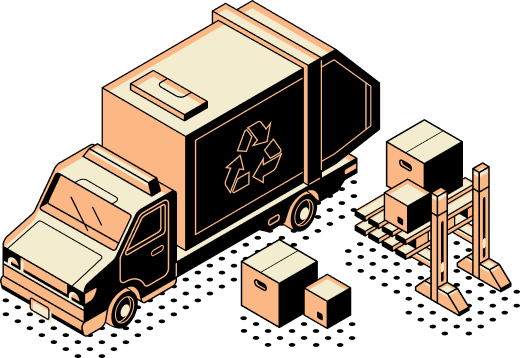
Turning the bottle upside down
Whether it's decreasing our use of single-use plastics, supporting reuse and refill systems or using products made from more ecological alternatives, we can reduce the true costs of plastic production. A recent report highlighted that the world can cut plastic pollution by 80 percent by 2040. Here’re some ways to make it possible:
- Reforming fossil fuels subsidies to shift towards cleaner and more sustainable energy.
- Tackling the greenhouse gas emissions generated during the transportation of plastics via ships or other methods.
- Promoting circular economy practices to decrease plastic pollution and encourage zero waste approaches to reduction, reuse, redesign and recycling.
- Investing in innovation to design-out plastic waste and scale-up eco-friendly materials and models.
- Empowering informal waste workers to improve their livelihoods, promote social inclusion and revamp the efficiency of plastic waste management systems.
The forthcoming session of the Intergovernmental Negotiating Committee (INC-4), scheduled to take place from 23 to 29 April 2024 in Ottawa, Canada, holds pivotal importance in this sense. Established by the UN Environment Assembly, the INC serves as a negotiating platform that aims to achieve a global agreement on plastic pollution by the end of 2024.

 Locations
Locations